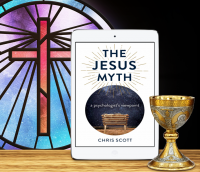

Salvation suggests deliverance, liberation, freedom, release, restoration and homecoming, powerful images of salvation firmly rooted in the exodus of the Hebrew slaves from Egypt and Israel’s later return from exile in Babylon, the first two defining episodes in God’s salvation history. And this is no mere escapism: “Deliverance belongs to the LORD!” (Jonah 2.9).
Yet salvation is not only about what God has done in the past; it is about what God is doing now and what God will do in the future. The story of the exodus has provided inspiration throughout history to people suffering under oppression and slavery, from the enslaved African people in the southern states of the USA before their emancipation in 1865, to the poor and marginalised of South America a century later who gave voice to what is known as “liberation theology”. The lyrics of the Negro spirituals – the “spiritual songs” (Ephesians 5.19) of the enslaved Africans in America – return again and again to “my home”, “Sweet Canaan”, “the Promised Land”. This free country was on the northern side of the Ohio River, which they called “the River Jordan”. Michael Row the Boat Ashore is a well-known example of their dream expressed in spiritual song.
The story of God’s people was taken up once more by Martin Luther King, the champion of racial justice during the American civil rights movement of the 1960s. In Memphis, Tennessee, on 3 April 1968, the eve of his assassination, he proclaimed:
I’ve been to the mountain top ... And I’ve looked over. And I’ve seen the promised land. I may not get there with you. But I want you to know tonight, that we, as a people will get to the promised land. And I’m happy, tonight. I’m not worried about anything. I’m not fearing any man. Mine eyes have seen the glory of the coming of the Lord. (www.seto.org)
I’d like to take you on a journey to the Promised Land. It’s a journey through Lent that starts in the Judean desert and leads to Golgotha. It’s the journey that Jesus made from his baptism in the River Jordan to his betrayal, arrest, trial, and crucifixion in Jerusalem, and it’s the story of our salvation.
At the same time we’ll take a parallel journey, following the fortunes of a group of pilgrims walking el Camino de Santiago, “the Way of St James”. The characters are from the film The Way and on this pilgrimage, as on any other, the travelling becomes as important as the destination. Beginning with Abraham, the theme of journeying is an ancient one in the Church and provides a reason for the practice of pilgrimage. Like the story of salvation, which has always been told in the context of a deep emptiness and yearning, pilgrimage stems from an aching and longing to be nearer to God. The physical act of movement is seen to aid an inward journey of closer encounter with God; pilgrimage is a journey of inner transformation that brings us nearer to our true home.
How to Do the Course
The course comprises five group sessions of ninety minutes each. Each session involves watching two clips from the DVD The Way (Icon Home Entertainment, 2011), which then become the focus for discussion.
Try to give the same attention to the film as you would if you were studying a painting, treating it as an art form in its own right. Regard each film clip not only as a springboard to wider discussion but also as a unique feast of image and sound, a contribution loaded with its own meaning and emotion. There is theological depth to be found here too, so in the five minutes of “brainstorming” after each film clip try to unpack fully what you have just seen and heard and the effect it may have had on you.
Before each group session there is a small amount of reading for you to do (the “Prelude”), which should help prepare you for some of the topics that come up for discussion in the group session. Here are a few ideas about how to do the course:
The first thing I want you to do is have some fun – don’t confuse study with penance! Lent is about “taking things on” (study and almsgiving) as well as “giving things up” (fasting and self-denial). There’s no reason at all why this course shouldn’t be fun, an opportunity to spend some time in the company of others in a relaxed and friendly environment. So try to enjoy the course, because then I think you will engage better with it and get more out of it in the end.
Try as best as you can to interact with the other people doing this course with you. More than anything else this means actively listening to what other people have to say, rather than always thinking about what you are going to say next. If you keep this in mind you will learn not only from what the course itself has to say but also from what your fellow participants have to say – and they will hopefully learn something from you. It goes without saying that this is the principal benefit of doing a Lent course as part of a church group, rather than simply reading a spiritual book at home as a purely private Lenten devotion.
Treat everyone with consideration and interest. Respect other people’s viewpoints even if you don’t necessarily agree with them.
Bring a Bible with you to the group sessions and remember – enjoy it!

BUY NOW
This second Lent resource from the author of The Naturalist and the Christ explores Christian understandings of “salvation” in a five-part study course based on the film The Way. Starring Martin Sheen as a bereaved father, this soulful and uplifting film observes a group of pilgrims walking the Way of St James to Santiago de Compostela. As it follows their jurney of inner transformation, the course examines biblical accounts and images of salvation – past, present and future – and addresses the questions: What are we saved from? What are we saved for? Who can be saved? What do we have to do to be saved? How are we saved?
Categories:
0 comments on this article







